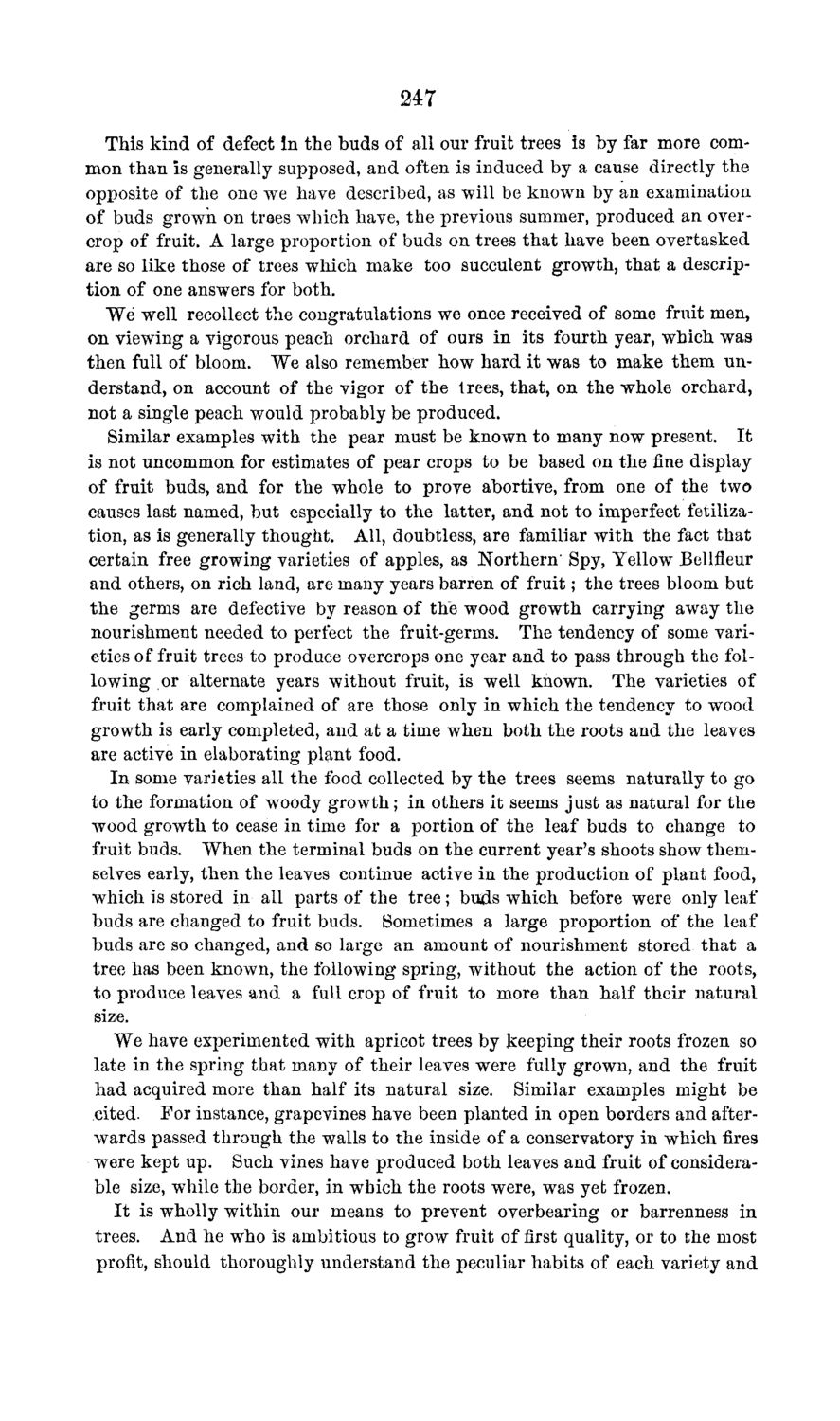| |
| |
Caption: Board of Trustees Minutes - 1869
This is a reduced-resolution page image for fast online browsing.

EXTRACTED TEXT FROM PAGE:
247 This k i n d of defect In the buds of all our fruit trees is by far more common t h a n is generally supposed, and often is induced by a cause directly the opposite of the one we have described, as will be known by an examination of buds grown on trees which have, the previous summer, produced an overcrop of fruit. A large proportion of buds on trees t h a t have been overtasked are so like those of trees which make too succulent growth, that a description of one answers for both. W e well recollect the congratulations we once received of some fruit men, on viewing a vigorous peach orchard of ours in its fourth year, which was then full of bloom. We also remember how hard it was to make them understand, on account of the vigor of the trees, that, on the whole orchard, not a single peach would probably be produced. Similar examples with the pear must be known to many now present. I t is not uncommon for estimates of pear crops to be based on the fine display of fruit buds, and for t h e whole to prove abortive, from one of the two causes last named, but especially to the latter, and not to imperfect fetilization, as is generally thought. All, doubtless, are familiar with the fact that certain free growing varieties of apples, as Northern' Spy, Yellow Bellfleur and others, on rich land, are many years barren of fruit; the trees bloom but t h e germs are defective by reason of the wood growth carrying away the nourishment needed to perfect the fruit-germs. The tendency of some varieties of fruit trees to produce overcrops one year and to pass through the following or alternate years without fruit, is well known. The varieties of fruit t h a t are complained of are those only in which the tendency to wood growth is early completed, and at a time when both the roots and the leaves are active in elaborating plant food. I n some varieties all the food collected by the trees seems naturally to go to the formation of woody g r o w t h ; in others it seems just as natural for the wood growth to cease in time for a portion of the leaf buds to change to fruit buds. When the terminal buds on the current year's shoots show themselves early, then the leaves continue active in the production of plant food, which is stored in all parts of the t r e e ; buds which before were only leaf buds are changed to fruit buds. Sometimes a large proportion of the leaf buds are so changed, and so large an amount of nourishment stored t h a t a tree has been known, the following spring, without the action of the roots, to produce leaves and a full crop of fruit to more than half their natural size. We have experimented with apricot trees by keeping their roots frozen so late in the spring that many of their leaves were fully grown, and the fruit had acquired more than half its natural size. Similar examples might be cited. For instance, grapevines have been planted in open borders and afterwards passed through the walls to the inside of a conservatory in which fires were kept up. Such vines have produced both leaves and fruit of considerable size, while the border, in which the roots were, was yet frozen. I t is wholly within our means to prevent overbearing or barrenness in trees. And he who is ambitious to grow fruit of first quality, or to the most profit, should thoroughly understand the peculiar habits of each variety and
| |